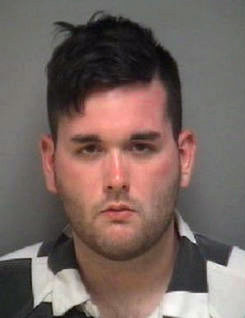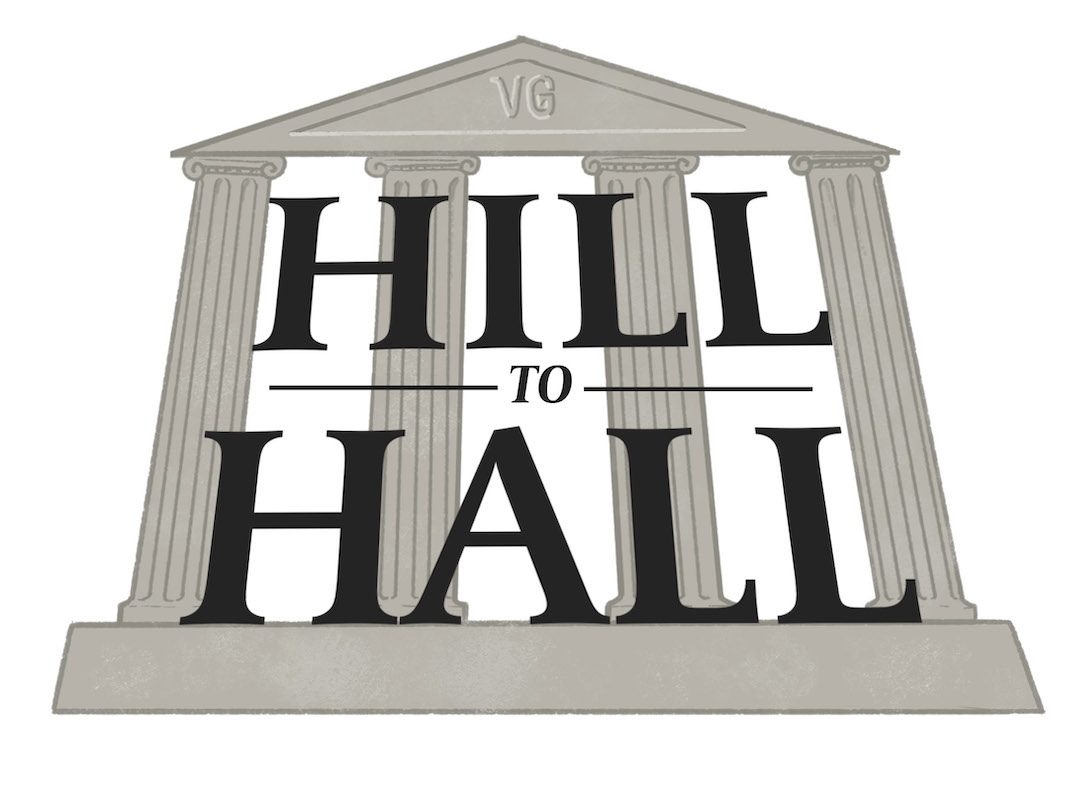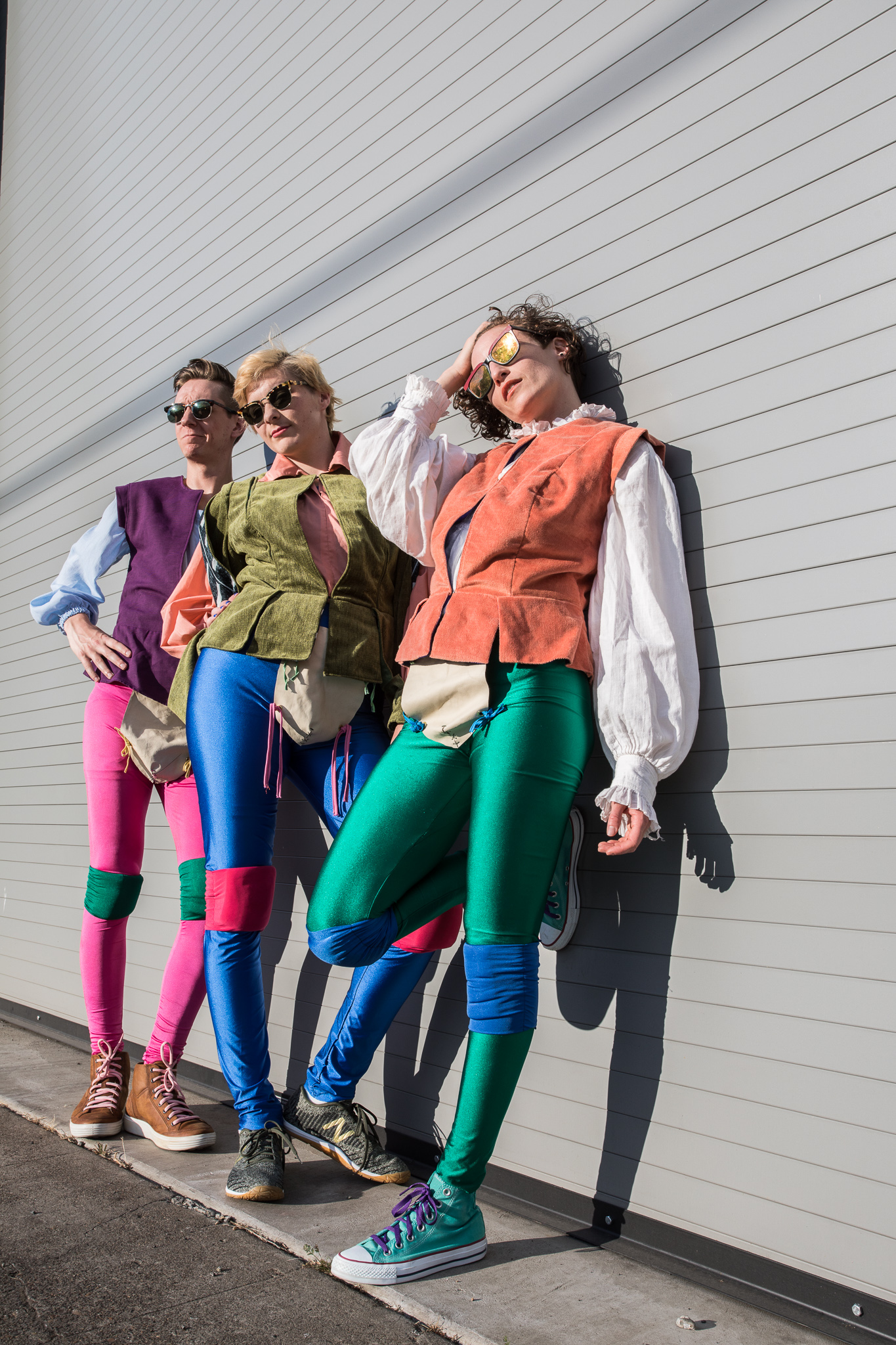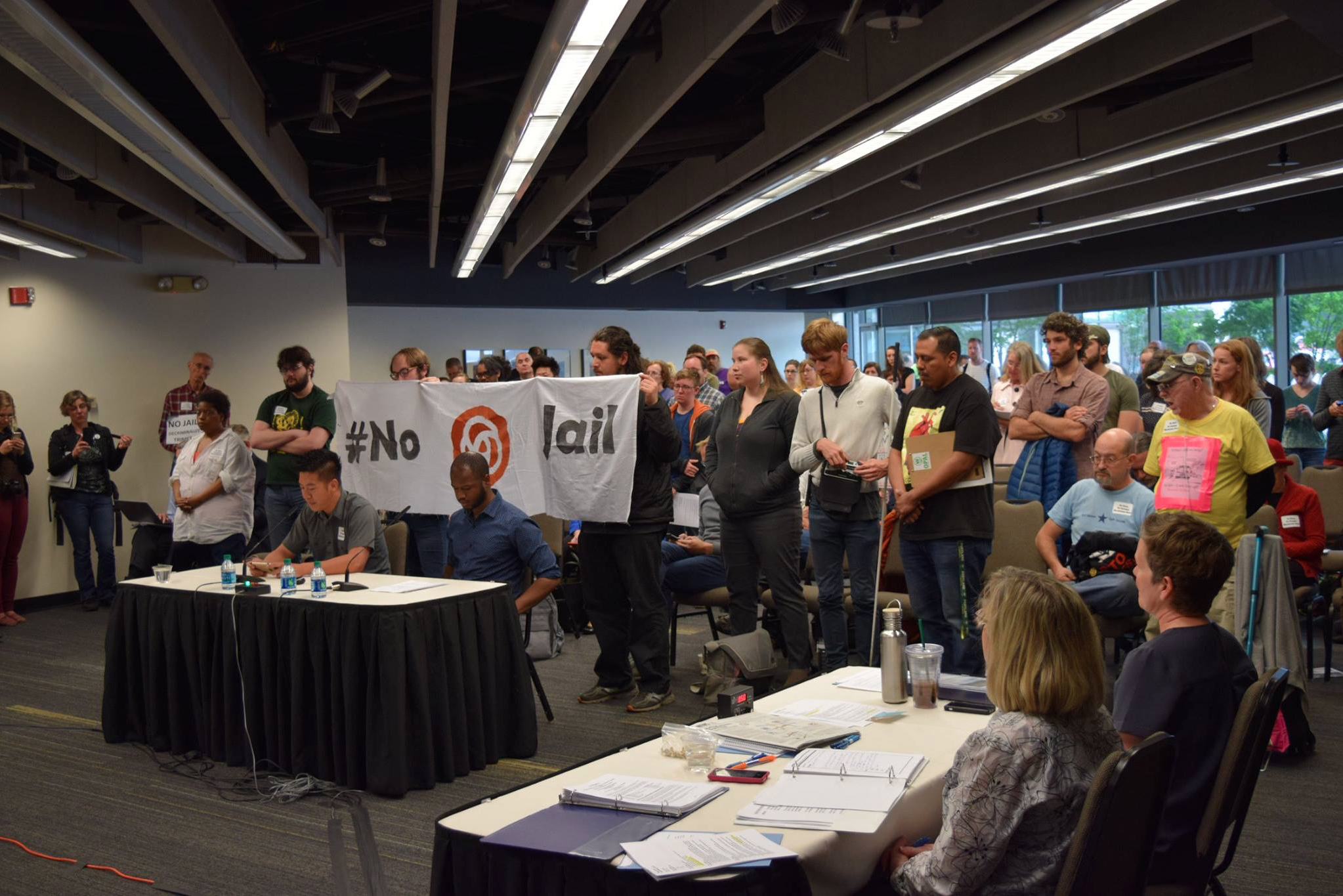Portland community members gathered outside city hall on Sunday, Aug. 13 to speak out against the large demonstration of white supremacists in Charlottesville, Virginia and to show solidarity with the counter-protesters violently assaulted over the weekend.
Organizers quickly planned the event in the wake of 32-year-old Heather D. Heyer’s death. Heyer was among 19 other people injured after James Alex Field Jr., a white supremacist, drove his car into a crowd of counter-protesters on Aug. 12. However, these were not the only assaults that took place during the Charlottesville demonstration.
“Vigil & Speakout: Portland Solidarity with Charlottesville” began at 5 p.m. and allowed a range of guests to speak out against the activities and ideologies of white supremacists, the importance of solidarity, community awareness, and to mourn the deaths of all who have lost their lives to hate crimes in the United States.
Live streams were available online for people to observe the topics discussed at the event which predominantly involved nonviolent solutions to overcoming hatred in the future.
One teenage speaker, in particular, shared their experience of how white supremacy has contributed to feelings of hopelessness for the future and fostered suicidal ideation as a way to negatively cope with witnessing and enduring systemic racism and hate crimes in the U.S.
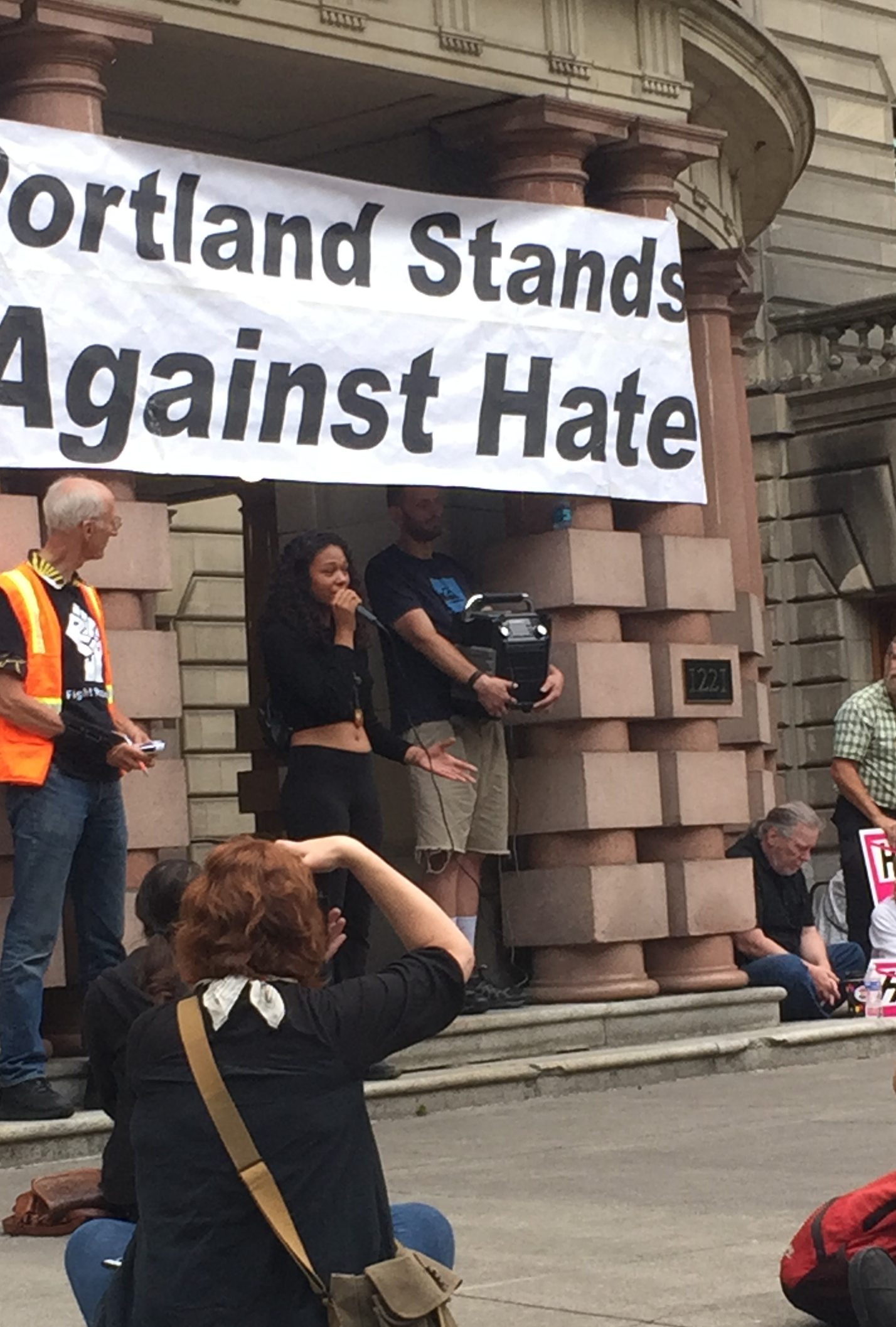
“Growing up with the appearance of being black but raised by my culture, my Native American culture,” the speaker said while struggling to hold back tears, “knowing the history between both of those cultures and you wake up every day trying to figure out what I’m going to do with my life [is] honestly crazy.”
“I was brought into history and into this world where I don’t want to mess with the system whatsoever,” they said. “I don’t want to go to school for five to ten years and then have a career in the system. Or work a nine-to-five job in the system. I’m super stuck. And you know, I’ve honestly considered suicide, but I love myself, I love my mind, [and] I love my country.”
“Talking to you guys, discussing this is super serious and not just [about] indigenous youth,” they continued. “Suicide…I hate to say it but I don’t want it to spread to other youth in my community. I don’t want suicide to be a huge thing that’s going to happen because of this. I know I’m not the only teen feeling this way.”
“Earlier today I heard a lady say, ‘As a white person, what can I do to help?’” the speaker said. “And I kind of laughed because there’s a lot, honestly. Talk to one another, as in a white-to-white conversation, is a starter but you have to realize [that] like a lot of people said today, these people [white supremacists] weren’t born this way. This was embedded in their minds.”
The young speaker advocated for practicing patience, understanding, and resilience as alternatives to violent retaliation when discussing the issue of white supremacy with those who’ve been corrupted into adopting the ideology as a mindset. Before ending, the speaker reminded the crowd that resistance to change in the U.S. could take another lifetime of struggle to overcome.
“You’ve just got to stay strong and try to find a way to stay motivated for sure because this world is fucked up,” they said. “I guess I’m a good example of what could happen and a good example of what to fight for because I want to be a part of the future.”
“The youth are very important, all of them, and all of you are as well,” they said in conclusion. “So just be aware of what people think and approach everyone in a calm setting without assumptions of anything is what we have to do as people, period, for everyone. Thank you.”
Some members in attendance cried while others among the crowd listened in an otherwise somber defiance toward reacting with anger. Jamie Partridge, one of three event organizers of the vigil, led the gathering in a series of short chants between speakers until the event ended around 8 p.m.
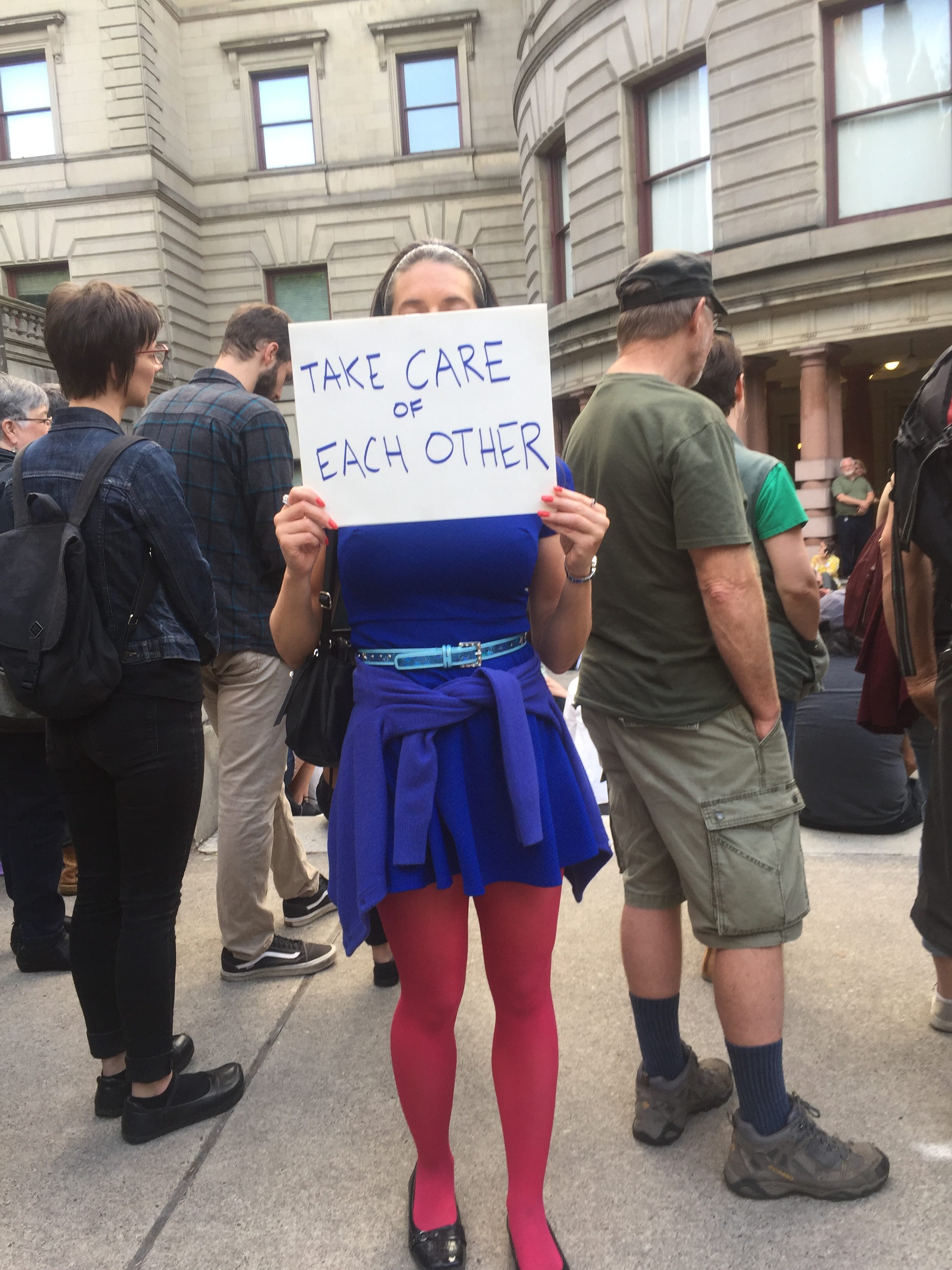
As the weekend continued and cities throughout the U.S. broke out in protest against the events in Charlottesville, numerous other reports and videos began surfacing to detail what has just now been recognized as a national crisis.
White nationalism is white supremacy
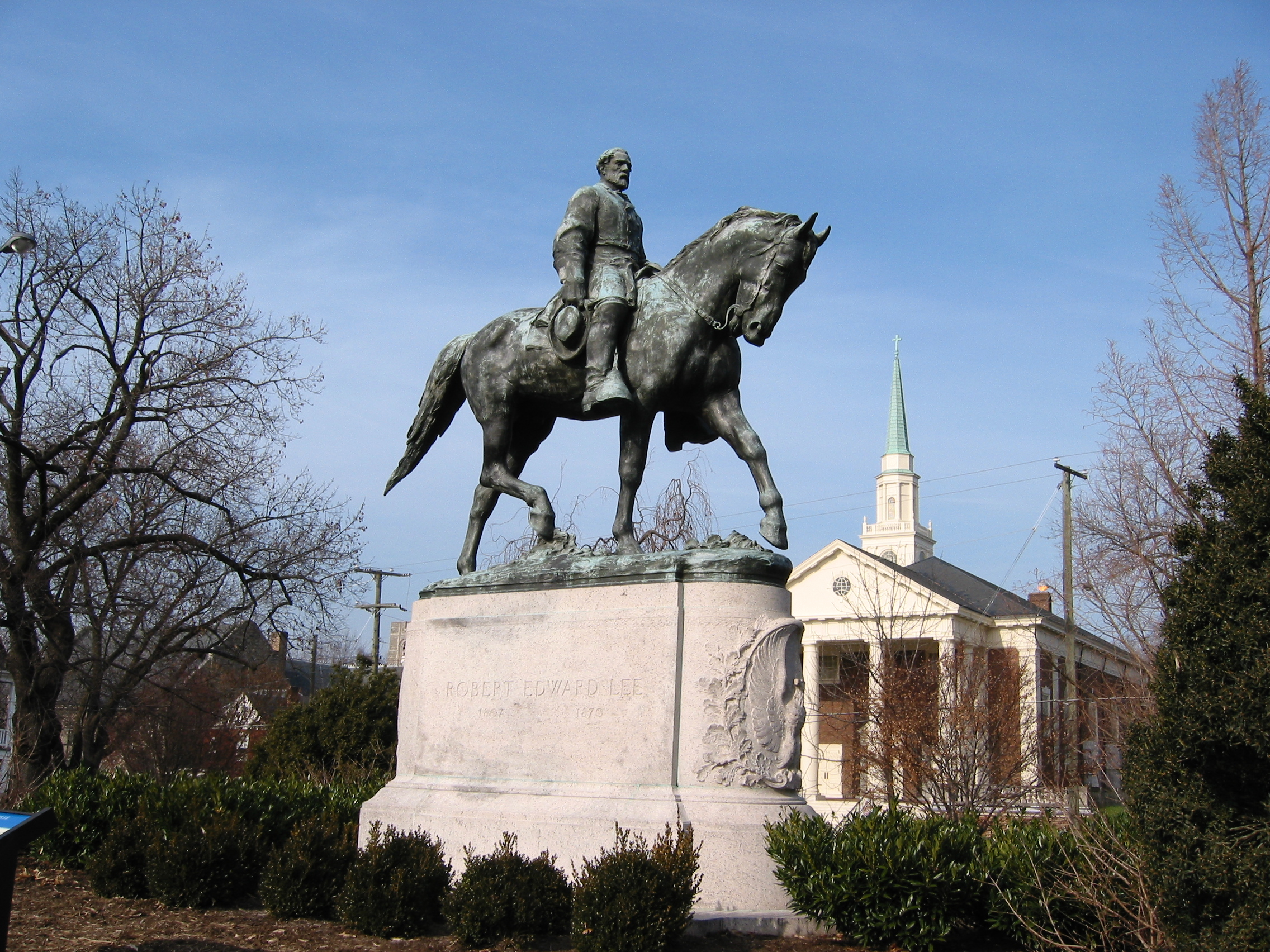
Prior to the events described in the following summary, documentation dating back to May 10, 2017 revealed that Donald Trump, the current president of the United States, had been warned by the Federal Bureau of Investigation and the Department of Homeland Security about the “state of white supremacist extremist violence in the United States.”
“…pledge allegiance to the flag…”
The most recent violence initiated in Charlottesville began with a demonstration on Friday, Aug. 11 at the University of Virginia where hundreds of white supremacists marched with torches in hand while chanting various slogans of recreant hate speech.
“…and to the republic for which it stands…”
Similar white supremacist rallies, including the Ku Klux Klan, began making national news in April 2017 after the Charlottesville city council decided to remove the statue of Robert E. Lee, a Confederate general who surrendered in 1865 during the American Civil War. The decision to remove and sell Lee’s statue was approved with a 3-2 vote in addition to renaming Lee and Jackson parks.
Richard Spencer, a white supremacist and UV alumni, responded by wrangling a torch-laden herd of white nationalists at Lee Park in May and returned to Charlottesville on Aug. 11 to participate yet again.
“…one nation, under God…”
Aryn A. Frazier, a UV student who witnessed the march, told the New York Times, “I was locked in a church full of people who were singing loudly to overpower the hate-filled chants of alt-right protesters carrying torches right outside the chapel doors.”
“…indivisible…”
Attendees from both Charlottesville alt-right gatherings were recorded chanting, “White lives matter,” and “You will not replace us,” among several other bellicose slogans associated with the former Nazi regime.
Counter-protestors were filmed clashing with white supremacist marchers as they descended a campus staircase with a resemblance to historic lynch mobs filmed prior to the U.S. civil rights era. A group of counter-protesters, including children, was filmed chanting, “Black lives matter,” as people with torches passed by.
https://twitter.com/TheMadDimension/status/896212026514706432
“…with liberty and justice for all.”
Friday’s convention preceded the following day’s event, “Unite the Right,” a rally organized by another UV alumni student, Jason Kessler. Kessler is the president of Unity and Security for America, a group he recently founded to “defend Western civilization.”
City officials initially denied Unite the Right organizers permission for the event. Kessler originally applied for a permit to demonstrate in Emancipation Park, formally known as Lee Park. However, Kessler’s permit was granted on Aug. 11 when city officials approved a relocation to a larger area.
The rally took place the following morning and broke out in violence shortly after it began, invoking Virginia Governor Terry McAuliffe to declare a state of emergency on Twitter by 8:52 a.m. PST.
Governor McAuliffe has declared a state of emergency to aid state response to violence at Alt-Right rally in Charlottesville
— Ralph Northam (@GovernorVA) August 12, 2017
Heather Heyer was one of three people who died in consequence to Unite the Right’s “defense of Western civilization.” In addition to the 19 people run over by Fields, 14 others were injured during street clashes, and two state troopers died in a helicopter crash while assisting local police.
“Defending Western civilization”
Kessler and other proponents of his ideology have been vocal via Twitter in criticizing Charlottesville police for the lack of protection they claimed to have experienced during the Aug. 12 rally. Despite the state’s demand to quickly end the protest Kessler tweeted, “Inside the park was peaceful. Outbreaks of violence occurred where people refused to separate or even pushed the feuding groups together.”
Unreliable reporting has been published by alt-right leaders such as Kessler, who endorsed Spencer’s Tweet providing a Periscope video of riot police entering the unlawful assembly to end the event. Spencer’s Tweet is titled, “We came in peace.”
In the first thirty seconds of the video, Spencer can be heard threatening the police, “You don’t want to do this guys. Don’t do it!”
“You are engaged in illegal activity,” Spencer asserts to passing police, before adding, “We are the only ones who will defend you guys.”
We came in peace.
#Charolettesville https://t.co/D401U5bDMw
— Richard 🌊 Spencer (@RichardBSpencer) August 15, 2017
At 3:18 in the video Spencer continues his attempts to reason with the riot police, who were already in formation, by shouting, “We will defend your right to police thieves. We will defend your right to police absolute criminals,” while gesturing beyond the park toward counter-protesters.
Riot police waited nearly seven minutes before presumably pushing Spencer and other white-supremacists out of the park. The video is approximately 10:55 minutes long but the visual display of the surroundings is obscured after 6:54.
The video’s audio suggests Spencer was not met with the police response typically reported in Portland which normally involves the use of pepper spray, noise and smoke bombs, rubber bullets, and batons.
Several documented assaults that occurred at the Aug. 12 rally also contradict Kessler and Spencer’s claims. Deandre Harris joined counter-protesters at the Aug. 12 rally when he was brutally beaten by several white supremacists after he separated from his friends.
According to Harris’s Go Fund Me page, Harris arrived at Emancipation Park around 11 a.m., and within minutes of arriving, was hit with water bottles, pepper-sprayed in his face, and subjected to derogatory slurs.
Harris wrote that after Governor McAuliffe declared the protest an unlawful assembly, he was chased into a parking garage and beaten by a group of white supremacists using poles as weapons against him.
“I was chased and beat with metal poles,” Harris wrote. “I was knocked unconscious repeatedly. Every time I went to stand up I was knocked back down.” Harris noted that while the parking garage was next to the Charlottesville Police Station, the police did not step in to protect him. “If it was not for my friends that I came with I would have been beaten to a pulp,” Harris wrote.
Harris was taken to the emergency room where he was treated for a concussion, an ulnar fracture, facial laceration and body abrasions. As of Tuesday evening, Aug. 15, Harris’s Go Fund Me page has been shared 29,000 times and has raised $136,395 of a $50,000 goal to pay for medical expenses.
The birth of the “Alt-left”
U.S. President Donald Trump was heavily criticized by Republican and Democrat politicians for his lack of timely response to the events and for not condemning the hate acts displayed on either day of the events.
Trump did release the following statement via Twitter on Aug. 12 at 10:19 a.m.:
We ALL must be united & condemn all that hate stands for. There is no place for this kind of violence in America. Lets come together as one!
— Donald J. Trump (@realDonaldTrump) August 12, 2017
Trump issued several other Tweets over the course of the weekend addressing his condolences toward known victims, although many Americans remained discontent with Trump’s lack of direct disapproval of the groups responsible for advocating white supremacy.
On Tuesday, Aug. 15, President Trump provided several statements during a press conference in Washington, D.C. to address the question of which group was to blame for the violence in Charlottesville.
“Well, I do think there’s blame—yes, I think there’s blame on both sides,” Trump said. “You look at both sides. I think there’s blame on both sides. And I have no doubt about it, and you don’t have any doubt about it either.”
When Trump was asked to clarify whether or not he believed members of the “alt-left” are the same as neo-Nazis, Trump provided the following statement:
“I’ve condemned neo-Nazis. I’ve condemned many different groups. But not all of those people were neo-Nazis, believe me. Not all of those people were white supremacists, by any stretch. Those people were also there because they wanted to protest the taking down of a statue, Robert E. Lee. So, excuse me. And you take a look at some of the groups and you see—and you’d know it if you were honest reporters, which in many cases you’re not, but many of those people were there to protest the taking down of the statue of Robert E. Lee. So this week it’s Robert E. Lee. I noticed that Stonewall Jackson’s coming down. I wonder, is it George Washington next week? And is it Thomas Jefferson the week after? You know, you all—you really do have to ask yourself, where does it stop? But they were there to protest—excuse me. You take a look, the night before, they were there to protest the taking down of the statue of Robert E. Lee.”
“We can scarcely take up a newspaper…that is not filled with nauseating flatteries” of Lee, from which “it would seem…that the soldier who kills the most men in battle, even in a bad cause, is the greatest Christian, and entitled to the highest place in heaven.”
– Frederick Douglas, historically acclaimed American author, former fugitive slave, and abolitionist on the death of General Lee in 1870.
[“Making Sense of Robert E. Lee,” Smithsonian magazine]



